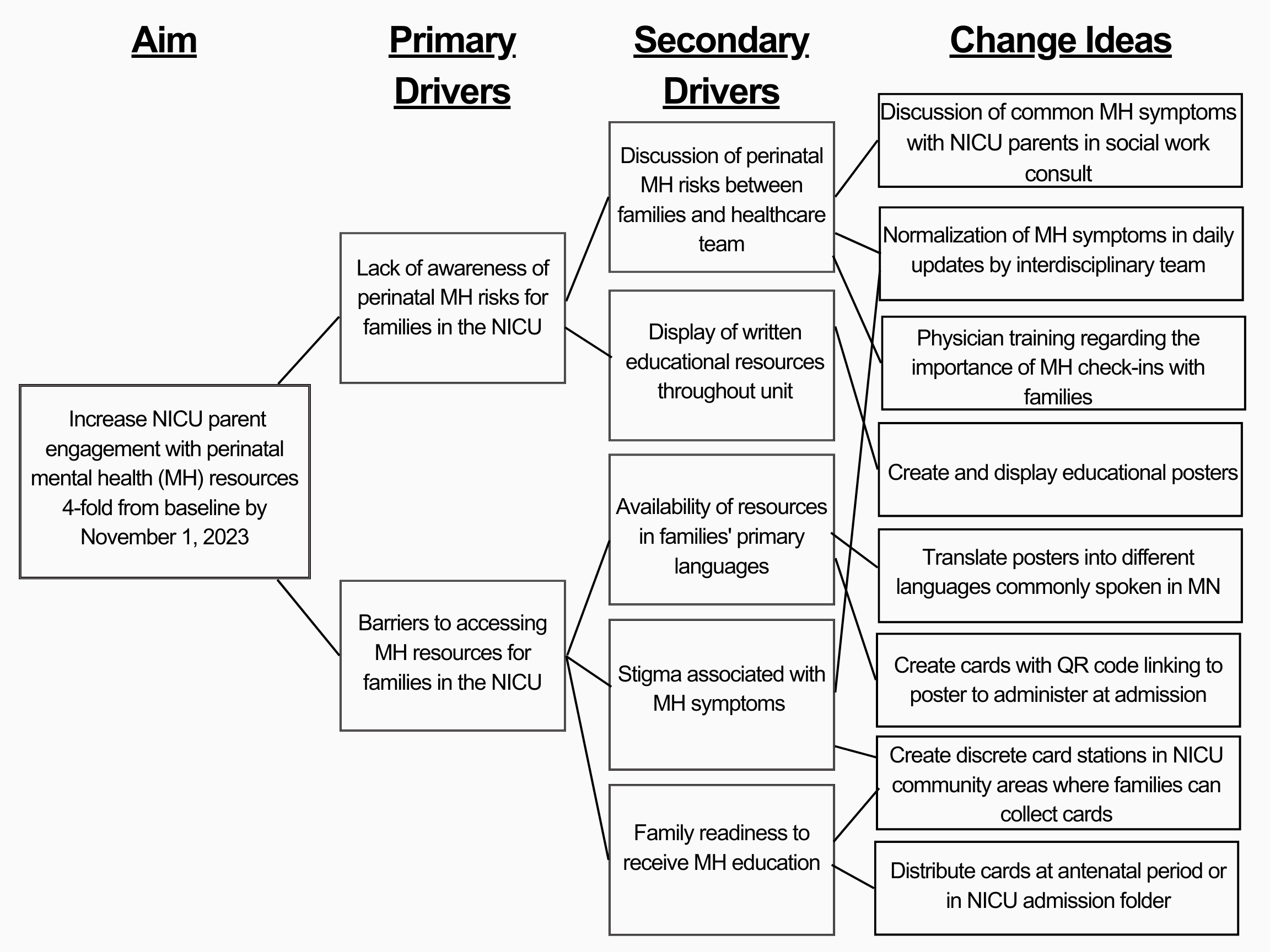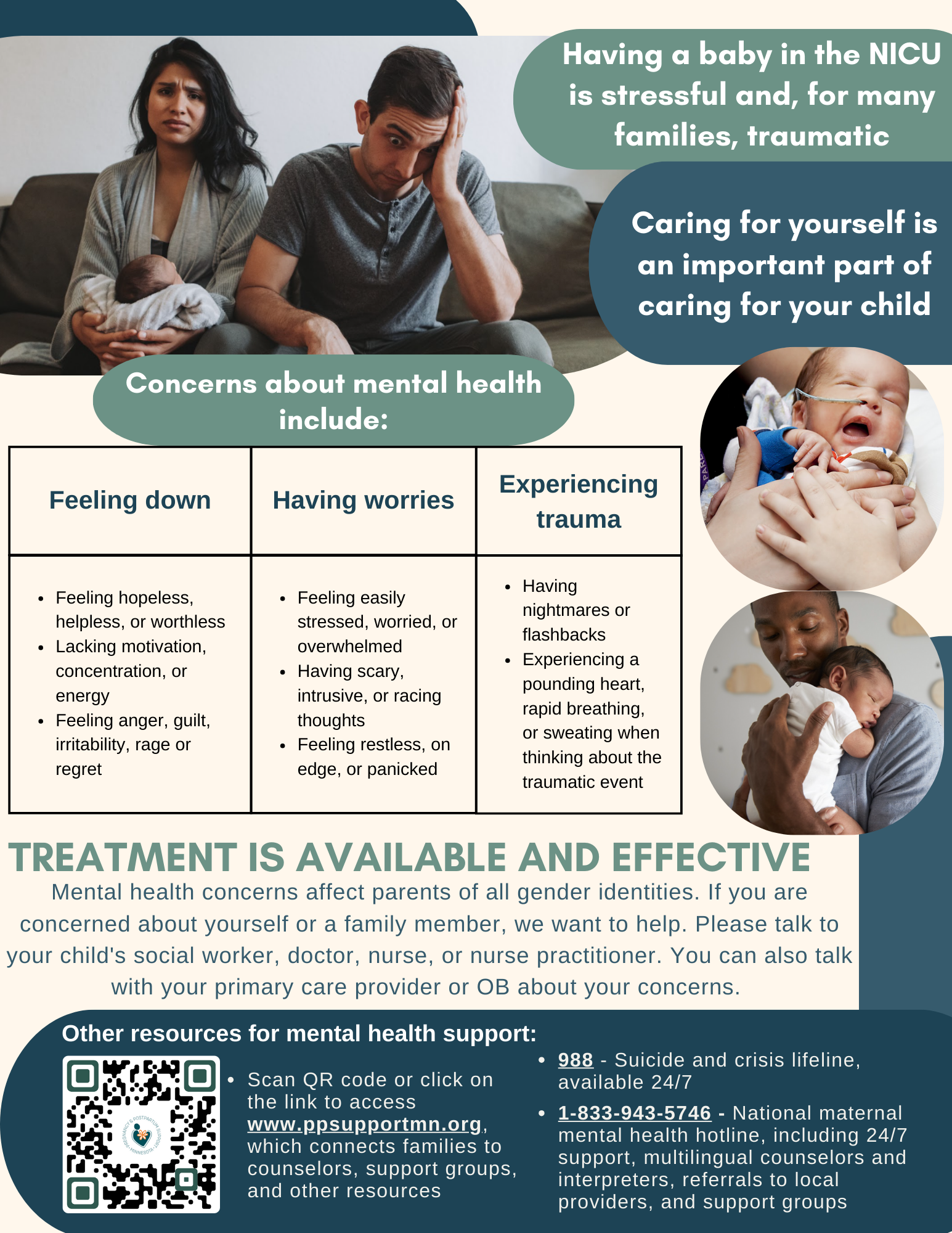Neonatology
Session: Neonatal-Perinatal Health Care Delivery: Practices and Procedures 2
461 - The Limitations of Virtual Education in a Tech Driven World: A Technology Focused Quality Improvement Initiative to Increase Parental Engagement in Perinatal Education Materials
Monday, May 6, 2024
9:30 AM - 11:30 AM ET
Poster Number: 461
Publication Number: 461.3140
Publication Number: 461.3140

Delaney E. Wilton, BS (she/her/hers)
Medical Student
University of Minnesota Medical School
Apple Valley, Minnesota, United States
Presenting Author(s)
Background: Perinatal mental health (MH) concerns are under-recognized and have consequences for both parents and children. The risk of MH concerns increases in parents with infants in the neonatal intensive care unit (NICU) compared to parents of healthy term infants. MH education is a proposed protective factor to support parent MH.
Objective: We used quality improvement (QI) methods with Plan-Do-Study-Act (PDSA) cycles to increase NICU parent engagement with MH resources measured by QR scans of educational materials. Between December 2022 and October 2023, we aimed to increase the number of QR scans from 0 to 4 per month (/m), hypothesizing higher engagement with tech-convenient resources.
Design/Methods: A multidisciplinary team designed a driver diagram (Fig. 1) and educational poster (Fig. 2) that addressed common MH concerns and available resources, such as a QR code link to the state website for Postpartum Support International. The poster was translated into Hmong, Somali, and Spanish and displayed in NICU lounges, lactation spaces, and bathrooms (PDSA1). Translated business cards with a QR code link to the corresponding poster were distributed to families at standardized intervals (1, 2, 4, 6 m) (PDSA1). Posters and cards in each language contained unique QR codes, allowing for differentiated language tracking. Posters were displayed on monitors throughout the NICU to increase accessibility (PDSA2). A card stand was placed in a NICU family lounge to facilitate access to virtual posters (PDSA3) and later added to a second family lounge (PDSA4).
Results: During PDSA1, poster scans (PS) averaged 1.5/m (2 English (E), 1 Somali (S), 1 Hmong (H)), and card scans (CS) averaged 1/m (4E). Introducing electronic posters (PDSA2) did not increase scans: PS: 0.25/m (1E, 1S, 1H, 2 Spanish), CS: 1/m (5E). With a card stand in a NICU lounge (PDSA3), PS averaged 0/m and CS averaged 0.66/m (2E). With card stands in both NICU lounges (PDSA4), there has been 1 additional CS (E).
Conclusion(s): We hypothesized higher parental MH resource engagement with more technology-facilitated accessibility, which was not shown. Given low engagement, a combination of technology-facilitated and in-person resources may be more impactful. Future work involves MH peer support groups and lunch seminars for NICU parents. This effort emphasizes the importance of QI work in optimizing MH education for NICU parents and demonstrates the need to explore other avenues to address this topic.


.png)
